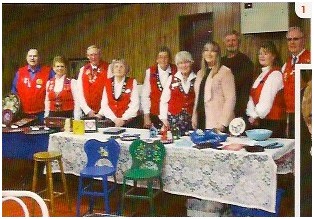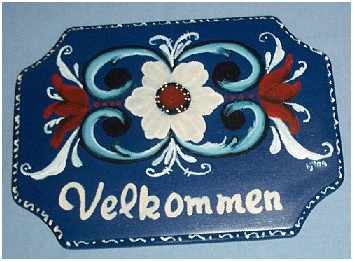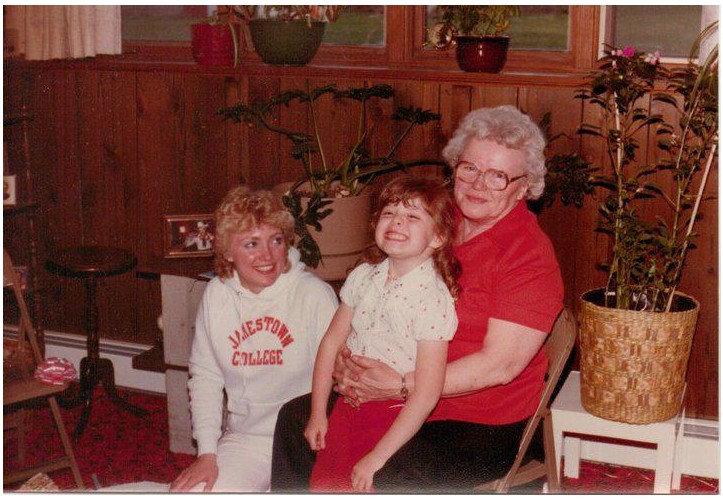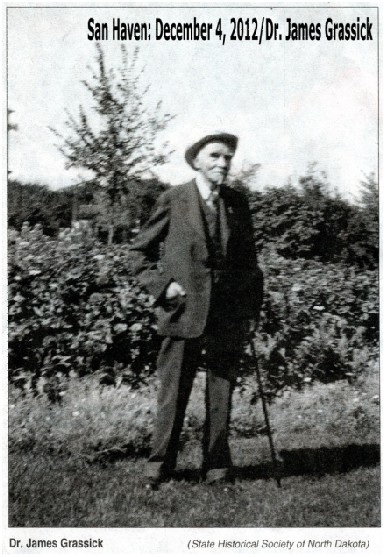Dave and I are in the midst of a move to our new home in Greenville, SC so I am a little behind on emails. I just read Scott Wagar’s excellent overview of schooling children with TB.
Sometime in the mid-1950’s, the books in the Children’s Building library were thrown or given away. My mom saved a large laundry basket of books for us including a full set of The Bobbsy Twins, Pollyanna, Anne of Greene Gables and many others from the early 1900’s – including All Quiet on the Western Front – that I read from cover to cover. I still love book artwork of the early 1900’s.
The Children’s Building was attached to the tunnel system so we walked thru the tunnels for meals during cold weather. Charlene’s family eventually moved to a cottage with an entrance to the tunnels so I often knocked on that tunnel entrance door. The Children’s Building was also the school bus pick-up location. We all stood near the front entrance mostly beside the hot water heater in the hall.
Brenda Hoffman (class of 1968)
I can identify the folks in the Sons of Norway picture for the
readers. It was the group of members who took the class in rosemaling,�
which is a very old art of Norwegian decorative painting. The
instructor was Alan Pearson who at one time was a teacher in the
Dunseith School system. They had several classes and many became quite
good at it. My wife took the class and has several articles she painted
now decorating our house. It’s nice stuff—at least we Norskies think
so. From left to right: Alan Pearson, Clarene Vestre, Glen Rude,�
Eloise Boppre, Kathleen Sebelius, Carol Nelson, Glenda Fauske,�
Russell Fauske, Brenda Johnson, and Lloyd Nelson. I’ll attach a
picture of one of my wife’s projects. This translates from ‘Velkommen’
in Norwegian to ‘Welcome’ in English. Thanks Gary!
Dick
Eloise Boppre, Kathleen Sebelius, Carol Nelson,
 God is good!
God is good!By the time the twenties ended, it seemed everyone they knew, had not�
much.
Everyone was used to frugal living.
Her mother, Mary was gifted with the innate ability to cook a�
delicious meal with very little.
Where ever berries ripened, Mary would venture any distance to go�
picking.
One June day Mary was quite insistent to go berry picking to go to a�
place she was quite fond. The wagon was hitched and they traveled�
many miles through the hills.
Mary always laughed in re-telling the story, in the midst of berry�
picking, baby Alice arrived at Butte St. Paul.
Eleanor said, like many farm families, her family lived off the land. �
Her parents raised gardens, and always kept a milch cow.
A person didn’t need a license to hunt. Her father had a gun which he�
hunted deer, partridge, and ducks. He also snared or shot rabbits.
Water was becoming scarce, the rains didn’t fall. Produce from the�
gardens was insufficient. Folks did what they could to survive. �
Eleanor’s father somehow got some copper tubing and a copper boiler.
Under a big window which always had a little breeze in the summer was�
Eleanors sleeping place. One night she woke to the sound of a voice,�
“Here it comes!” She peeked and saw a drip, drip, drip. She went back�
to sleep whilst it was made.
A significant memory, because, after few days her father borrowed her�
Grandma Rose’s little black mare and driving buggy.
Eleanor was to told she could accompany her father to town. A special�
day with just she and her dad.
They arrived into and drove to the back of the general store. The�
horse was tied and she followed her father when he took the big jug�
out of the wagon and went through the back door where they were met by�
the storekeeper. She thinks his name was Mr. Beeson.
The storekeeper, took the jug from her father. She noticed the old�
shopkeepers hand trembled and shook as he reached for little flasks�
which he filled from the jug.
Once the flasks were full, they were tucked away out of sight. And�
her father was able to purchase necessities, including flour,sugar,�
salt.
With little money left, Eleanor’s father said, “We are not going home�
yet. Come with me.”
Eleanor said, “Her father walked her to the Althea Theatre where he�
paid for two tickets. Enter ing they sat down and watched the silent�
movie. On the way home, her father said, “Remember this Eleanor,�
someday, tell your grandchildren, you saw the last silent picture show�
in Dunseith with your father.”
Thank You Eleanor for the story of your dear humble parents, Bill�
and Mary.
Thanks Gary and friends.
When San Haven opened in 1912, the primary treatments for the tubercular patients were fresh air, rest and a well balanced diet. As the decades went by at the sanatorium the primary treatments continued on throughout its’ history, but different treatments came and went.
Over the years, patients were given sun treatments, which were proven not to work and discontinued at the San. There were numerous surgical procedures conducted that collapse patients’ tubercular lungs and allowed them to rest, which saved a large number of lives at the sanatorium, but were grueling surgeries to go through, because the patients were awake through the all the procedures without general anesthetic because their lungs and health were too poor to take anesthetic without killing them.
As the sanatorium continued to treat their patients on a daily basis, researchers throughout the world were working on trying to find a cure for TB. A major breakthrough came in the 1940s when researchers discovered antibiotics that slow growth of, and in some instances, in sufficient concentration, eliminated TB.
The first major break through happened in 1943 when Dr. Selman Waksman, a microbiologist at Rutgers University, along with his colleague, Albert Schatz, were examining soil brought into their lab by a farmer who claimed his poultry was becoming ill because of the soil on his farmstead. In the soil, Waksman and Schatz discovered a fungus called Stretomyces griseus.
The two researchers began experiment with the fungus and discovered that certain strains of the fungus produced a chemical agent that slow or eliminate certain pathogens, which included TB. Waksman and Schatz called their new pharmaceutical Streptomycin.
Scientists continued their work in finding other pharmaceuticals to assist with TB and in the late 1940s discovered aminosalicylic acid and isoniazid.
On July 1, 1949, with the medications approval of being able to eliminate TB, San Haven began to use the antibiotics. By 1958, the number of beds being used at the sanatorium declined greatly.
In that same year, the state determined that Grafton State School, an institution for the mentally handicapped, was overcrowded. With open beds at the San, patients from Grafton were moved into the sanatorium with a portion of the San being used to treat TB patients, and the remainder of facility to care for the mentally ill, which consisted primarily of hydrocephalics.
On July 1, 1973, the North Dakota Tuberculosis Sanatorium officially closed as a state institution for the treatment of TB. With antibiotics, and local hospitals treating TB, there were no reasons to keep the San open for TB patients. With it closure, Grafton took over the facility and operated it as institution for the mentally handicapped.
Grafton ran the operations of the grounds until December 21, 1987, due to a judicial decision. In the summer of 1985, U.S. Distric Judge, Bruce Van Sickle, ruled in favored of a case brought before the court by the Association for Retarded Citizens, to deinstitutionalize the mentally handicapped and place them in the private sector. Governor George Sinner was order by the court to remove all patients from San Haven.
On that December day in 1987, the last seven patients were removed from the facility and the state closed down the institution.
Shortly after San Haven was close, a variety of companies from the private sector rented space within the grounds for a short time. After companies left the institution, the state was unable to care for sanatorium due to budget cuts. In 1993, The Turtle Mountain Chippewa Indian Reservation purchased the institution for $1,100 with plans to renovate the buildings for other uses.
As the grounds stood empty during through the 1990s, and against the wishes of the tribe, individuals trespassed into the former sanatorium and stole any items of value. Worse, in their efforts to steal from the San they caused mass destruction of the facility.
It also became a place for young people to party and in 1999 while in the Infirmary Building two kids entered into an open elevator shaft where one was killed and the other seriously injured.
Since that time, the buildings at San Haven have started to deteriorate and are slowly falling in on themselves.
In December, San Haven will be 100 years old. In the 61 years that it was state sanatorium, the San went from one building on 260 acres of land to 20 plus buildings on 940 acres of land.
It has been said that the sanatorium did not help in eliminating TB in our state. However, thousands of individuals were diagnosed with TB in North Dakota and only small fraction of those people passed away from the disease. San Haven did a tremendous job in caring for those with TB and in the process saved thousands of people’s lives in our state.




